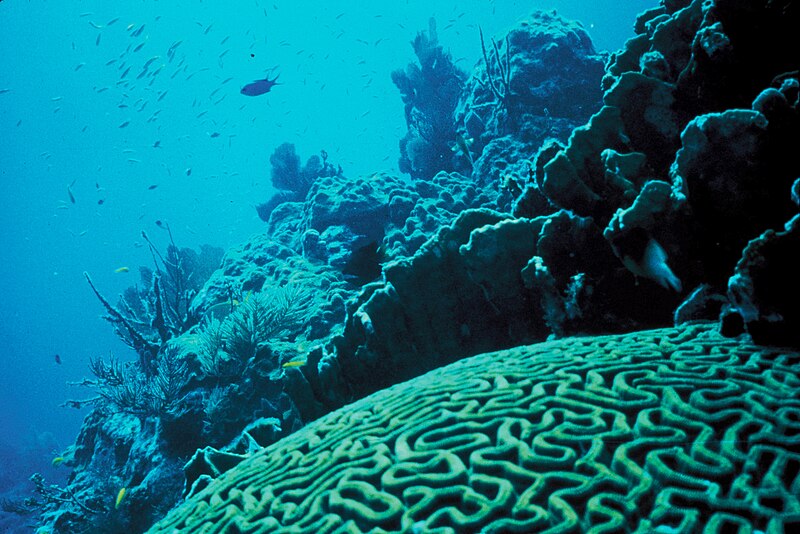 If you’ve ever had to catch a fish out of your aquarium (or watched the employees at your fish stores catch the fish for you to take home), you can probably appreciate how difficult it can be. These are in relatively small glass or acrylic boxes however; catching a fish from its own home turf is exponentially more difficult! Back when the marine aquarium trade was first gaining popularity in the mid-20th century, collection was usually laid at the feet of local islanders and fishermen, especially in the small Indo-Pacific island communities that may have had little other source of income. They naturally tried to optimize their collection and profits, but unfortunately this often came at the cost of the animals they were retrieving. Techniques like blast fishing (discussed in a May 2010 blog) and the use of cyanide became common. While not as physically destructive as blast fishing and bombs, cyanide collection was just as deadly. It is now illegal and banned in many areas, but enforcement can be spotty in these isolated areas and some of these irresponsible practices still occur.
If you’ve ever had to catch a fish out of your aquarium (or watched the employees at your fish stores catch the fish for you to take home), you can probably appreciate how difficult it can be. These are in relatively small glass or acrylic boxes however; catching a fish from its own home turf is exponentially more difficult! Back when the marine aquarium trade was first gaining popularity in the mid-20th century, collection was usually laid at the feet of local islanders and fishermen, especially in the small Indo-Pacific island communities that may have had little other source of income. They naturally tried to optimize their collection and profits, but unfortunately this often came at the cost of the animals they were retrieving. Techniques like blast fishing (discussed in a May 2010 blog) and the use of cyanide became common. While not as physically destructive as blast fishing and bombs, cyanide collection was just as deadly. It is now illegal and banned in many areas, but enforcement can be spotty in these isolated areas and some of these irresponsible practices still occur.
The cyanide used is typically sodium cyanide, a salt similar to the hydrogen cyanide gasses used in execution chambers and the concentration camps during the Holocaust. In cyanide fishing practices, the sodium cyanide is usually mixed with water in bottles that the fishermen can then use to spray the mixture into the reef or around where they believe the fish may be hiding. Once in saltwater, sodium cyanide breaks apart into sodium and cyanide. Sodium is one of the major components of salt water and dissolved harmlessly, but the cyanide enters the bloodstream of the fish (or other animals). In much the same way as we are affected by carbon monoxide, the cyanide prevents the animal’s cells from absorbing oxygen. This essentially “stuns” the fish and puts them into a stupor, making it easier for the fishermen to collect them.

 So what can you do to avoid purchasing fish collected using cyanide fishing methods? There is no tell-tale sign that a fish in your local fish store has been collected using cyanide, but the basic quality checks that go into any purchases can help you make wise purchases – make sure the fish is healthy, feeding and well acclimated. Know your supplier as well – many reputable companies are now ensuring that the people collecting fish are properly trained and certified in safer, sustainable collection methods. Ask your local fish store if their suppliers have any certification or guarantees from their collectors that they are using only sustainable, safe collecting methods. Keep an eye open for tankraised or captive-bred fish as well; more and more species are being bred in captivity in recent years so they have never had the opportunity to be exposed to this collection methods.
So what can you do to avoid purchasing fish collected using cyanide fishing methods? There is no tell-tale sign that a fish in your local fish store has been collected using cyanide, but the basic quality checks that go into any purchases can help you make wise purchases – make sure the fish is healthy, feeding and well acclimated. Know your supplier as well – many reputable companies are now ensuring that the people collecting fish are properly trained and certified in safer, sustainable collection methods. Ask your local fish store if their suppliers have any certification or guarantees from their collectors that they are using only sustainable, safe collecting methods. Keep an eye open for tankraised or captive-bred fish as well; more and more species are being bred in captivity in recent years so they have never had the opportunity to be exposed to this collection methods.
Reef Fishes image referenced from wikipedia and originally posted by Mila Zinkova
 That Fish Blog – Aquarium Advice and Information
That Fish Blog – Aquarium Advice and Information

I am really curious how prevalent this is anymore. I hear many people talk about this on blogs and in magazine articles all the time, but is the like discussing the barbaric be-headings occurring over in England? Information like this is, even though it is shared with the intentions of sharing sustainable practices, is often used by people like snorkel Bob to try to ban the aquariums! If anyone knows how often this actually occurs anymore or can find a single piece of evidence that this has occurred in the last several years, please share.